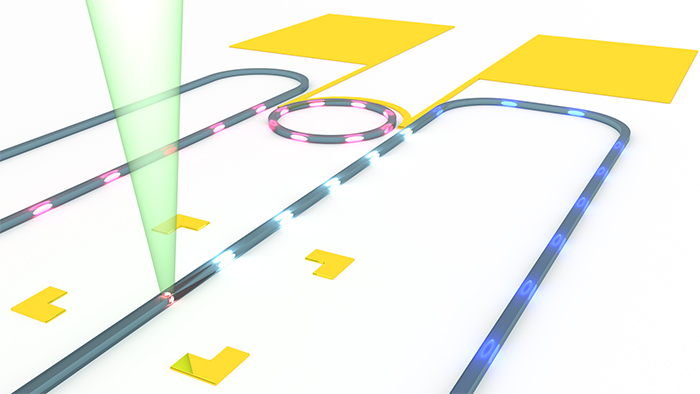Researchers one step closer to making integrated quantum optical circuits

Swedish team integrate artificial atoms (quantum dots) into silicon-based photonic chips.
Researchers at the KTH Royal Institute of Technology in Sweden have taken a significant step toward enabling optical quantum information processing on a chip. Their new method in quantum nano photonics was published in Nature Communications.
The group has managed to create the building blocks of such a system by integrating artificial atoms (quantum dots) in silicon-based photonic chips. They have generated and filtered single photons on-chip without the use of any external components.
Quantum computers and networks are expected to outperform today's classical computers and networks, which encode information in binary bits. Rather than bits consisting of ones and zeros, quantum bits can simultaneously take a superposition of both values, which means that they can process significantly higher amounts of information with fewer calculation steps. Potential applications include energy efficient computation, sensing and secure communication.
However, there are challenges to overcome in order to be able to develop effective integrated quantum circuits. The Quantum Nano Photonics group at KTH solves these challenges in the work presented in Nature Communications, says KTH researcher Ali Elshaari, a co-author of the study.
In the past, it has been extremely difficult to isolate quantum dots and to place them in a useful circuit, as they are randomly grown without having high control over their properties and their position in the circuit. Additionally, it is difficult to generate single photons on the same chip without using external filtering to remove all unwanted signals from the quantum emitters and background light, Elshaari says.
The research team, led by PVal Zwiller and Klaus D. Jöns, used a novel nanomanipulation technique to transfer selected and pre-characterised single photon emitters in nanowires, on a silicon chip. The team then built an integrated optical circuit to filter single photons and multiplex them. The latter means using multiple quantum dots to generate light in various 'colours' that can be used to encode different information on the same chip, he says.
"In order to achieve a functioning integrated quantum circuit, one must build its components deterministically," Elshaari says. "That means every component of the circuit is carefully designed and optimized to perform a specific task. There is no room for randomness or chance when it comes to the characteristics of the source or its location in the optical circuit, unlike previous approaches."
One of the new achievements of the research team's work is that they have created a hybrid approach that combines two semiconductor technologies, III-V technology in the form of nanowire-based quantum emitters, and silicon technology in the form of the integrated optical circuit, he says."Hybrid integration with nanowires has not been done before. The results are a very important step toward enabling quantum information processing on a chip."
Also contributing to the study was co-author Iman Esmaeil Zadeh, from TU Delft.
































